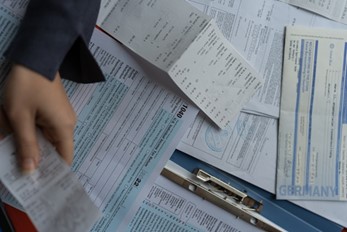
As a self-employed individual, managing your taxes can be one of the more complex aspects of running your own business. Unlike salaried employees, who have taxes automatically withheld from their paychecks, self-employed workers, including those providing 1099 services, are responsible for calculating, paying, and filing their own taxes. One of the most important responsibilities in this process is paying estimated taxes.
The following article breaks down estimated taxes and provides a comprehensive guide for self-employed individuals, including how to calculate and pay these taxes, when to pay, and common mistakes to avoid. By understanding estimated taxes, you’ll be better prepared to meet your tax obligations and avoid penalties.
Estimated taxes are payments made on income that is not subject to automatic withholding. For the self-employed, this includes earnings from freelance work, consulting, side jobs, or any other business income where taxes are not automatically deducted.
The Internal Revenue Service (IRS) requires that self-employed individuals make periodic payments throughout the year to cover their federal income tax and self-employment tax obligations. These payments are typically due quarterly, and they help avoid a large tax bill at the end of the year.
Self-employment taxes include:
As a self-employed individual, you’re responsible for both the employee and employer portions of Social Security and Medicare taxes, which is why your self-employment tax rate is higher than the standard rate for employees.
If you are self-employed and expect to owe at least $1,000 in taxes for the year (after subtracting withholding and refundable credits), you are required to make estimated tax payments. This applies to freelancers, independent contractors, business owners, and anyone with income not subject to withholding.
Some common examples of income that require estimated tax payments include:
In addition to self-employed individuals, others who might need to make estimated tax payments include retirees receiving pension or investment income, or those who have other income sources that don’t have withholding, like gig economy workers.
The IRS provides a detailed process for calculating estimated taxes, but it can be a bit daunting without a basic understanding of your income and tax liability.
To calculate your estimated taxes, you first need to estimate how much income you expect to earn during the year. This includes all sources of income from self-employment, freelance work, interest, dividends, rental income, etc.
Self-employed individuals are responsible for self-employment tax, which covers Social Security and Medicare taxes. The current self-employment tax rate is 15.3% on net earnings. This includes:
However, there is a Social Security wage base limit—only the first $160,200 of income (for 2023) is subject to the 12.4% Social Security tax. The 2.9% Medicare tax applies to all net earnings, no matter the amount.
You can calculate your self-employment tax by:
In addition to self-employment tax, you must pay federal income tax. The amount of federal income tax you owe will depend on your total taxable income, including all sources of income (wages, investments, business earnings, etc.). The IRS provides tax brackets that determine your rate depending on your income.
For example, if you are earning a total of $50,000 as a self-employed individual, you may fall into the 22% tax bracket for federal income tax purposes. This would be applied to your taxable income after deductions and credits.

The IRS provides a form called Form 1040-ES, which is designed to help you estimate your quarterly tax payments. The form includes a worksheet to guide you through the calculation process, including how to compute your self-employment tax and income tax.
Form 1040-ES also includes a payment voucher to send with your payment if you prefer to make your estimated tax payments by mail.
Estimated tax payments are typically due four times a year. The due dates are as follows:
If the due date falls on a weekend or holiday, the due date is typically moved to the next business day. For example, if April 15 is a Saturday, the deadline would shift to April 18.
Once you have calculated your estimated taxes, you can choose from several payment methods:
It’s important to keep track of your payments, so you don’t miss any deadlines. The IRS does not send reminders for estimated tax payments, and missing a payment can result in penalties and interest.
There are several common mistakes self-employed individuals make when paying estimated taxes. Avoiding these errors can help you stay compliant and avoid costly penalties.
One of the most common mistakes is underestimating your income for the year. If you don’t accurately estimate your earnings, you might end up paying too little in taxes and owe a large balance when you file your return.
Another common issue is forgetting to make quarterly payments. The IRS may charge penalties and interest for late payments, even if you eventually pay everything you owe.
Don’t forget to account for deductions like business expenses, home office deductions, and other tax credits. These can reduce the amount of income subject to taxes.
If you experience significant income fluctuations (for example, during a slow season), you may need to adjust your estimated tax payments. Failing to do so can result in overpayment or underpayment.
Understanding and calculating estimated taxes is crucial for self-employed individuals to avoid tax penalties and ensure they meet their obligations throughout the year. By accurately estimating your income, calculating self-employment tax, and staying on top of quarterly payments, you can ensure that you’re financially prepared and avoid the stress of a large, unexpected tax bill at the end of the year.
If you’re unsure about how to calculate or make your payments, it’s a good idea to consult a tax professional. They can help you navigate the intricacies of self-employment taxes and provide advice on tax-saving strategies that benefit your business.
With careful planning, paying estimated taxes can be manageable, and you'll be better equipped to handle your financial responsibilities as a self-employed individual.